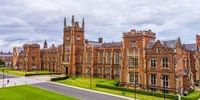The ÔcondensateÕ of Cooper pairs in a superconductor means that magnetic fields pass through in the form of quantised flux lines, each containing one quantum of flux associated with circulating supercurrents. The structure and dynamics of magnetic flux lines in superconductors, which may form a lattice, liquid or a 'glass' are studied experimentally by small-angle neutron diffraction and muon spin rotation, using international facilities.Ê
The flux lattice structure tells us about fundamental interactions inside superconductors. In addition to ÒcuprateÓ high temperature superconductors, there is a wide range of metals with novel electrical and magnetic properties arising from strong electron correlations.Ê
They include Sr2RuO4 which is believed to be a p-wave superconductor, in which the electrons are paired with parallel spin, as opposed to the opposite spins of conventional and cuprate superconductors. We are also investigating the properties of CeCoIn5, which is a ÒPauli-limitedÓ Òheavy fermionÓ superconductor, in which the superconductivity in high magnetic fields is suppressed by the magnetic effects on the electron spin, instead of the usual diamagnetism. The properties of these novel materials are studied using muon and neutron measurements at temperatures down to 50 mK in fields as high as 11 T.Ê
Career
Preparation for your career should be one of the first things you think about as you start university. Whether you have a clear idea of where your future aspirations lie or want to consider the broad range of opportunities available once you have Physics and Astronomy (Condensed Matter Physics Specialism) from University of Birmingham, the Careers Network can help you achieve your goal.















